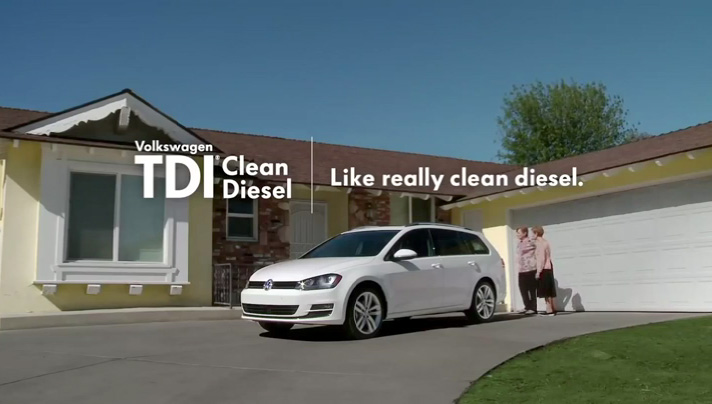Back in 2009, the $3 billion Cash for Clunkers program, or Car Allowance Rebate System (CARS), offered $3,500 to $4,500 for older vehicles up to 25 years old regardless of the condition provided consumers replaced it with a new, more fuel-efficient one.
With signals that the green-car sector in particular might be suffering at the start of the pandemic-induced downturn, it’s probably not too early to be thinking of a recovery plan—in the form of a new kind of Cash for Clunkers.
Although the original CARS was widely seen as a success, with more than 700,000 thirstier and more polluting older vehicles taken off the road, things are different this time. We're in the midst of an oil glut and record-low gas prices—a different combination of factors than last time, for sure—and pushing people toward higher mpg might not find the kind of universal support such a program might need in Washington D.C.
Consumer data from Maritz study on Cash For Clunkers program results, March 2010
Green Car Reports ventures to say that such a program based on emissions is a better bet—as the kind of emissions that endangers our lungs and hearts isn't in lock step with fuel consumption.
The science is established for the effects of pollutants on lungs and cardiovascular systems, and while COVID-19 mortality hasn't been linked to pollution levels, in the midst of a pandemic that hits people who are compromised in those two areas, awareness of pollution levels and how your vehicles contribute to them is critical.
Last month The Guardian reported about several studies—not yet peer-reviewed—that might suggest the idea that it’s more than that: The particles in air pollution could be carrying the virus.
How might we get to such a scheme to get more cleaner cars on the road? One answer for Europe, if it plans something like it, is to look at real-world emissions ratings—such as those compiled by the AIR Alliance, an independent group that aims to be like what the IIHS is in the U.S. for crash-test safety.
![Mazda6 undergoing real-world emissions testing in Europe [Credit: LSDSL - Wikipedia] Mazda6 undergoing real-world emissions testing in Europe [Credit: LSDSL - Wikipedia]](https://images.hgmsites.net/lrg/mazda6-undergoing-real-world-emissions-testing-in-europe-credit-lsdsl--wikipedia_100667055_l.jpg)
Mazda6 undergoing real-world emissions testing in Europe [Credit: LSDSL - Wikipedia]
The Alliance’s system is already being rolled out for Europe and the U.K., and it follows the new on-road testing method CWA17379, which measures real-world nitrogen oxide and carbon dioxide emissions.
As the AIR Alliance points out, a vehicle might comply with Euro 6 emissions and yet it might be clean or dirty in its actual tailpipe emissions, with no distinction made under the current system.
In Europe, the test system is primarily aimed at 2013-2018 vehicles that were sold before the Real Driving Emissions test and accompanying WLTP program were phased in. Prior to that, a number of vehicles were let into the top Euro 6 grouping when they weren’t actually clean.
The group is currently standardizing a methodology that can also apply to pure electric vehicles and various kinds of hybrids. It’s also working on a system that will rate cabin air quality. And with a few environmental groups or trade organizations interested, such a program could potentially get enough funding to extend to vehicles sold in the U.S.
The new AIR Index gives each vehicle a rating A to E (best to worst) in NOx and CO2 emissions from multiple real-world road tests.

AIR Index - Scores basis for NOx, 2020
It should be noted that to meet the protestations of many carmakers, regulators introduced a “conformity factor” for NOx that allowed higher levels from the driving test than the previous dynamometer test; nevertheless a ratings system identifies the best.
In 2018, former Audi head Rupert Stadler was still dealing with the aftermath of the diesel scandal and called the new requirements as “proving extremely challenging."
Today, the Audi A6 is among the passenger-vehicle diesels that have managed top "A" scores—indicating that they’ve cleaned up to comply with the necessary 0-80 mg/km of urban NOx necessary for that distinction. Those vehicles also include diesel versions of the Jaguar E-Pace, Range Rover Evoque, and many others.
Last month, Nick Molden, the co-founder of the system, noted that such a system might be used to select the clean vehicles to incentivize in a possible vehicle-scrappage scheme, like Cash for Clunkers, to keep the auto industry moving and keep cleaning up tailpipe emissions.

Volkswagen TDI 'clean diesel' television ad screencap
The scientific advisory committee for AIR includes Dan Carder, who led the West Virginia University team that published some of the evidence that led to the Volkswagen emissions scandal.
“The AIR Index provides data to allow a much more targeted approach, and it is a free and quick solution,” Moldon said. “We know official emissions ratings are not good enough, but our real-world testing and results allow the right choices to be made.”
Although we don’t have such a system in the U.S. yet, it should be a starting point—along with a better understanding that while CO2 is mostly in sync with fuel consumption, dramatic differences exist in NOx emissions. Such a simple rating system would help single out the cleaner vehicles from the dirty ones—a distinction that hasn’t been easy for consumers up until now—and it gives a better representation of the emissions when vehicles are being driven in urban environments.
As we try to clear the air of a lung-based epidemic, it should be the only way.
